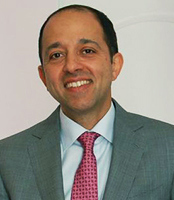Cleft lips and cleft palates are craniofacial anomalies that occur in the early phases of fetal development. In medical terms, an anomaly is something irregular or different from normal. A ‘cleft’ is a separation. We all begin life with a separated palate and lips. Sometime between the fourth and seventh weeks of pregnancy, the two sides of a baby’s upper lip begin to fuse together. When the fusing doesn’t happen in the right way, the upper lip remains split, or cleft. The size of the separation can range from a small hole to a more significant opening extending from the base of the nose to the top jaw and gums.
The roof of a baby’s mouth, called the palate, forms sometime between the sixth and twelfth week of pregnancy. There are two parts of the palate. The hard palate is firm and bony. It follows the curve of the top teeth. The tissue of the soft palate is fleshier and more flexible. It covers the area in the back of the mouth. When one or both of these parts forms incompletely, the baby is born with a cleft palate.
A child can be born with a cleft lip, a cleft palate or both. Cleft lips and/or cleft palates are one of the most common birth defects in the U.S., occurring once in every 700 births. Cleft lip is more common than cleft palate. The Center for Disease Control (CDC) estimates that about 2600 babies are born with cleft palate and about 4500 are born with a cleft lip, with or without a cleft palate. A cleft may affect only one side of the mouth and face (unilateral), or both sides (bilateral). Statistically, clefts are more common in boys than girls, and affect more children of Asian, Latino and Native American descent. The incidence of clefts in children of African-American descent is lower than that for children of other ethnicities.
Causes and Risk Factors
The causes of orofacial clefts among infants are mostly unknown. Cleft lip and/or cleft palate may be caused by a combination of genes and other factors, such as exposures in the environment, maternal diet, smoking and use of medication. A recently concluded 14-year study by the Centers for Disease Control and Prevention (CDC) reported on the causes of birth defects. The study provided new information and also confirmed previously known health risks associated with cleft lip and cleft palate.
The study reported that women who smoke during pregnancy are more likely to have a baby with an orofacial cleft than women who do not smoke. Women with diabetes diagnosed before pregnancy also were shown to have an increased risk of having a child with a cleft lip or cleft palate.
Eating meals that fail to provide necessary nutrients, drinking alcohol or using drugs, cocaine for example, in early pregnancy increases the risk of birth defects. Genetic syndromes are another cause of cleft lip and cleft palate. Syndromes are caused by abnormalities of chromosomes that result in a recognizable pattern of malformations. Cleft lip/palate is a part of more than 400 syndromes including Waardenburg, Pierre Robin, and Down syndromes. Approximately 30 percent of cleft deformities are associated with a syndrome. Genetic counseling is often suggested for cleft patients.
Babies with cleft lips and palates often have difficulties with feeding and talking. They may also experience more frequent ear infections, hearing loss or problems with their teeth Shining light on risk factors for cleft lip and palate can help women take steps to avoid risky behavior and create healthy habits to increase their chances of delivering a baby free of health issues. Such steps include taking a daily multivitamin with folic acid, not smoking, eating a healthy diet and not drinking alcohol during pregnancy.
To learn more about Cleft Lip and Palate Awareness Week going on in the UK this week, visit the Cleft Lip and Palate Association’s website at http://www.clapa.com. In the US, July is designated as National Cleft and Craniofacial Awareness and Prevention Month. You can also search Hashtags #CleftAware and #Cleftstrong on Twitter to connect with others who are sharing information and support in the cleft lip and palate community.
 Kayvon Haghighi, DDS, MD, FACS is licensed to practice both medicine and dentistry in the state of New Jersey. Dr. Haghighi’s unique combination of surgical training and experience in facial reconstruction enables him to analyze your condition from multiple points of view.
Kayvon Haghighi, DDS, MD, FACS is licensed to practice both medicine and dentistry in the state of New Jersey. Dr. Haghighi’s unique combination of surgical training and experience in facial reconstruction enables him to analyze your condition from multiple points of view.

